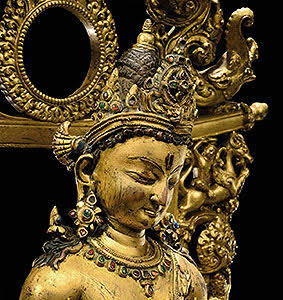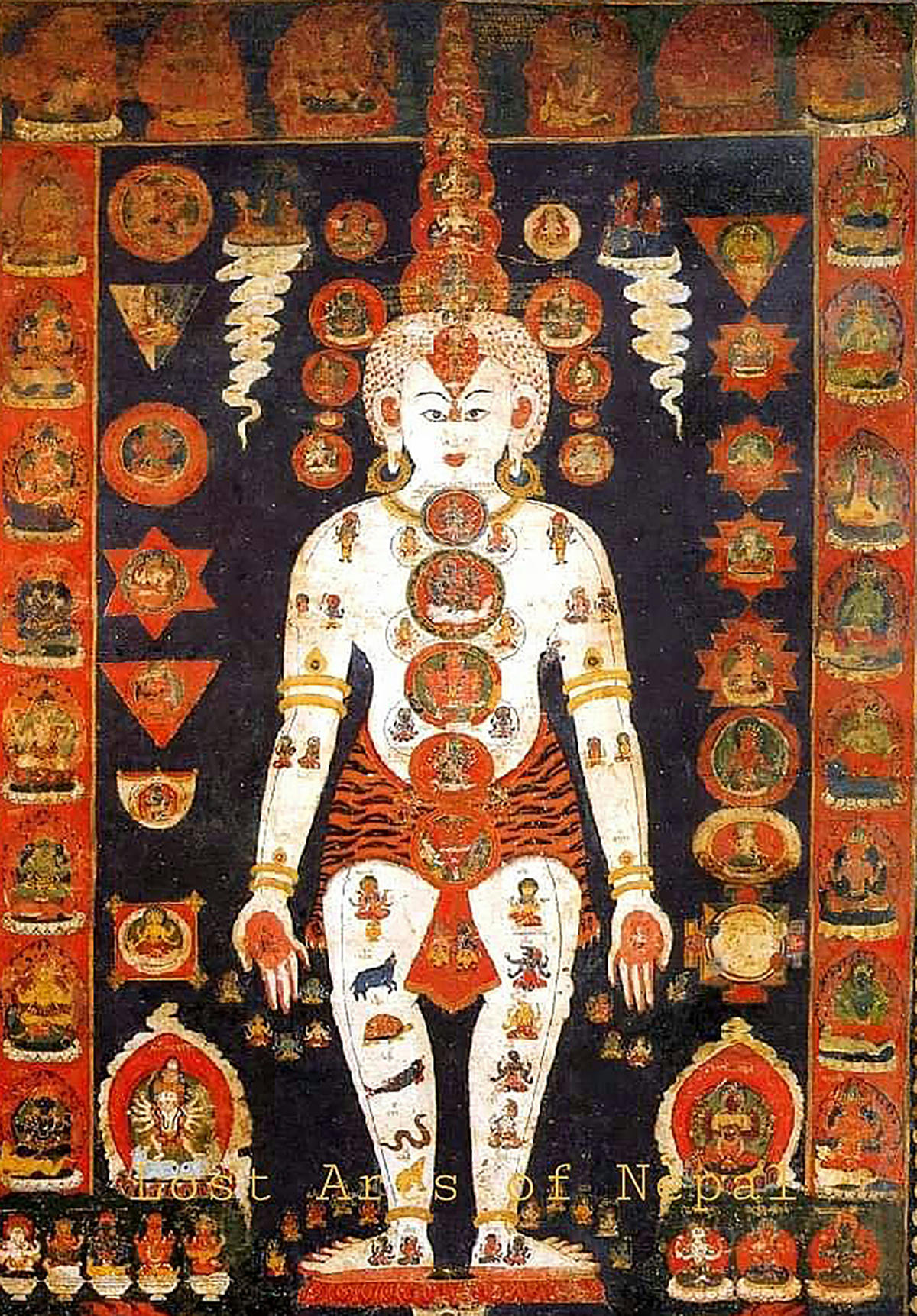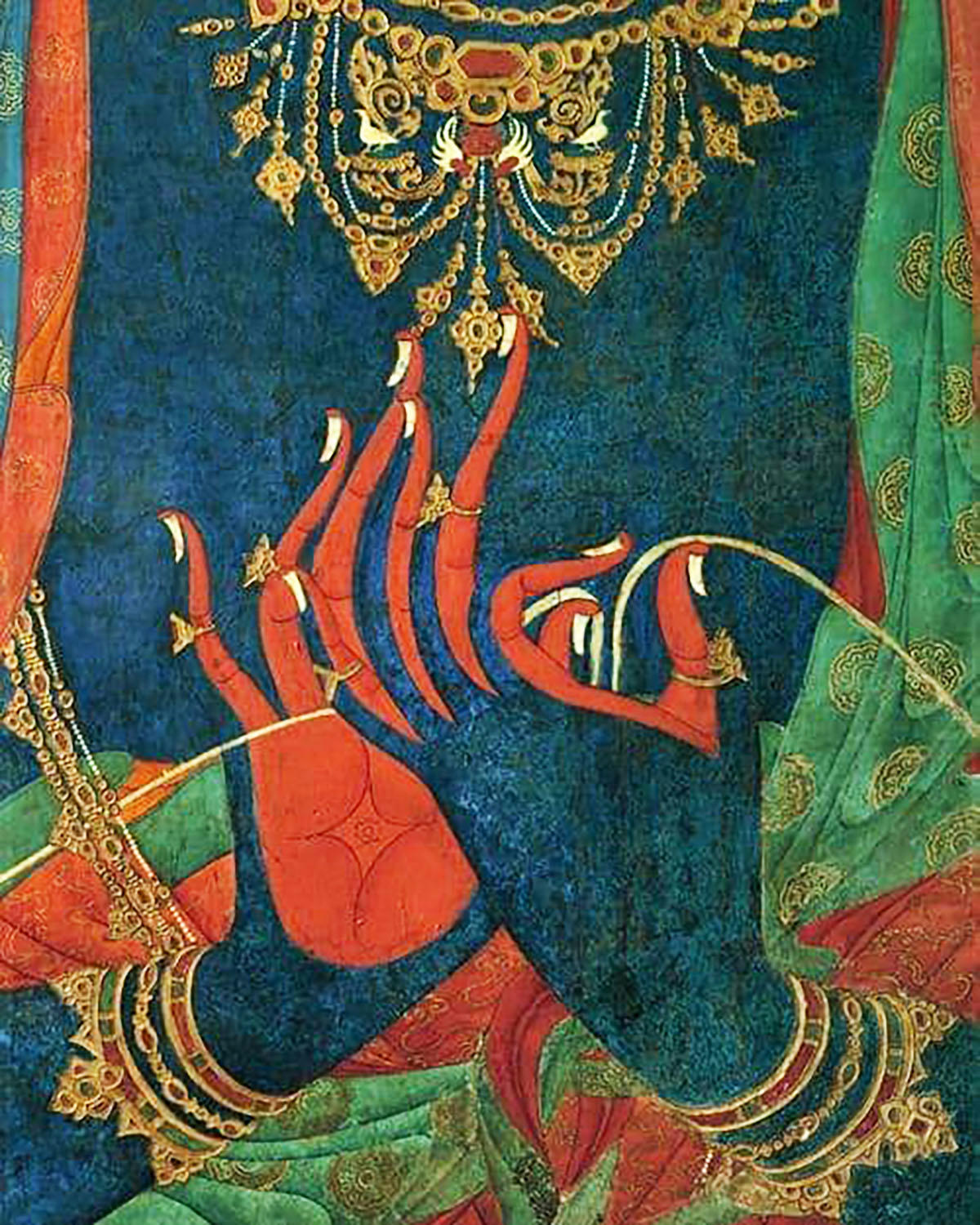Kuṇḍalinī Sādhana




“There is no other divine fire able to consume the whole of duality than Kuṇḍalinī.”
—Abhinavagupta (approx. 950–1020 A.D.), one of India’s greatest spiritual masters
Kuṇḍalinī Sādhana is a spiritual practice that comes to us through the Tantric Śaivite and Tantric Buddhist traditions. It is a yogic system aimed at transforming our understanding of the three elements of our existence: body, mind, and spirit. It is the yoga that explores kuṇḍalinī, which is the energy of life or the Divine as it is experienced in the individual. The practice of Kuṇḍalinī Sādhana carries the awareness of this energy to such a point that it may be grasped not only as the power of the individual self but also as the fundamental power of the infinite Self—the source of all of life. This creative energy is referred to as “dynamic stillness.”
Kuṇḍalinī is often described as a serpent coiled three times, lying dormant at the base of the spine. The three coils of the serpent kuṇḍalinī represent the three aspects of its energy: prāṇa-kuṇḍalinī, the energy that manifests physical life; cit-kuṇḍalinī, the energy of the mind and emotions; and parā-kuṇḍalinī, the energy of our spiritual being. When kuṇḍalinī awakens from its latent state, it rises through the spine, piercing the centers of awareness called cakras. It is the piercing and releasing of the awareness within each cakra that cuts through our tensions, blocks, ignorance, and ego.
Kuṇḍalinī is the energy and essence of life, and Kuṇḍalinī Sādhana is the practice of becoming aware of that essence. As the kuṇḍalinī arrives at its destination of the sahasrāra, the energetic center known as the thousand-petaled lotus at the top of the head, we become fully aware of our total unity with the Divine. Kuṇḍalinī Sādhana is the practice of blissful dissolution of dualistic consciousness into the experience and reality of that fundamental unity.
Śaktipata means “the descent of grace.” In nondual traditions, śakti transmission is understood to be the highest form of spiritual initiation, providing students with immediate access to the divine energy that dwells within them. The transmission of energy, an essential ingredient in the awakening of kuṇḍalinī, is transmitted by the teacher in four primary ways: look, touch, thought, and word. Śakti transmission removes the restrictions that contract consciousness from its all-pervasive unlimited expanse down into limited awareness.
In our practice, the “open-eye class,” or śakti transmission by look, is the principal method that allows for the direct transmission from teacher to student. During class the student meets and stays in contact with the direct gaze of the teacher, allowing for the transference of energy, all while remaining in full contact with sense perceptions and in view of the material world. As an energetic flow is established between teacher and student, the student can begin to internalize the energy, creating a deep connection to the sacred space of the heart that ultimately leads to the recognition of the true nature of the Self that lies within.
The Trika tradition, which masterfully and succinctly articulates the movement toward liberation, was significantly influenced by the direct recognition that emerged from the practices of kuṇḍalinī.
Kuṇḍalinī Sādhana was very influential and widespread and one of the most exalted of the ancient traditions of Asia and India. Earliest evidence of the term (7thce) showed up in an extremely early Śakta (goddess/energy focused) text – The Siddhayogeshvari Matta: The Doctrine of the Goddess of Perfected Yoga. This was shortly followed by Kallotara Tantra – a Śaivite (Shiva/consciousness focused) text and were eventually synthesized into one of the main streams of nondual wisdom teachings known as Trika Śaivism.
Kuṇḍalinī sādhana is 100% a tantric doctrine, not found in any other pre-tantric source!
— Christopher Wallis
Although no prior use of the word in any other source known to us it is apparent that the practice must have been prevalent and established for a long time for it to begin to show up in the scriptures or written wisdom teachings of the day. Those teachings were only oral and energetic transmissions from the Guru in the beginning, and scripture is the expression of the inner experience of those who then chose to expound them in written form.
Our practice focuses on the dynamic interchange of five keys to transformation:
1. Inner Practice — Direct Experience of the Self
Sitting in meditation on a regular basis is a critical component of our practice. As we withdraw our energy and attention from the external world and mundane sense perceptions, we begin to discern the deeper resonance and foundational substratum of higher awareness that informs and extends into our mental, emotional, and worldly life. By learning a meditative practice, we develop an internal flow of energy and connect with the Divine within. It is the method by which we stoke the fire of kuṇḍalinī and allow it to rise.
2. Transmission of Energy and Relationship with the Teacher
Śakti transmission of energy is a significant way that the student gathers spiritual nourishment from the teacher. It is love, unconditionally given. This grace ignites the creative power within the student and sustains long-term inner growth. Though the teacher is essential in the process of spiritual growth, Swami Khecaranatha is not interested in guru worshipping. Students are free to decide the kind of relationship they want with him.
3. Selfless Service (Seva)
Being of service to others is the means by which we extend our spiritual understanding into our life. This involves loving and serving the people whom we say we love, and then expanding that love and service to the community around us. As Rudi said, “If we cannot build into our day the simple capacity to love and open to our fellow man, we cannot claim to have a spiritual life.” In the highest sense, seva, or selfless service, is not about us or our wants and needs, but about giving what is wanted and needed to the people around us. If we can love and serve the people around us, we can be of service to God.
4. Conscious Choice and Disciplined Action
We are either consciously choosing to grow spiritually or we are unconsciously choosing not to. When spiritual life is our primary focus, it is very important that we make choices that reinforce that priority. Talking about making decisions based on our wish to grow and actively making the often-difficult choices that truly contribute to our growth are not the same. Conscious choice is the careful selection of that which truly supports our inner growth, even at the sacrifice of some worldly gain. This is not a rejection of the world but an understanding of the commitment required for spiritual growth. It is accepting that some activities, even though they may seem attractive at the time, take too much energy from us. Recognizing that, we make the conscious choice to not engage in those activities.
In order to keep our attention and awareness focused within during intense times—whether in a challenging conversation or during a major event in our lives—we must develop the capacity to manage our energy by being disciplined in our actions. Growing spiritually is a gift, but one that requires responsibility, discipline, and balance. Disciplined action is the act of keeping our awareness and energy inside and not acting upon or creating tensions in ourselves or those around us.
5. Study of Scripture/Wisdom Teachings
The central message of ancient nondual scripture is that spiritual liberation happens through the recognition that God dwells within us as our highest Self. Scriptures are guideposts that say, “Look this way.” Traditionally, teachings were always passed down by oral transmission, but in later times, spiritual masters decided to preserve this knowledge in the form of written exposition, which, in combination with a disciplined inner practice and the teacher-student relationship, provided even more powerful means for attaining the highest. Within a particular lineage, it is the role of the guru to interpret these wisdom teachings for their kula, or community of practitioners. For all contemporary students of spirituality, these teachings remain a powerful guide. It is through grace that the wisdom of ancient sages is available to us today to help us on our spiritual journey.

